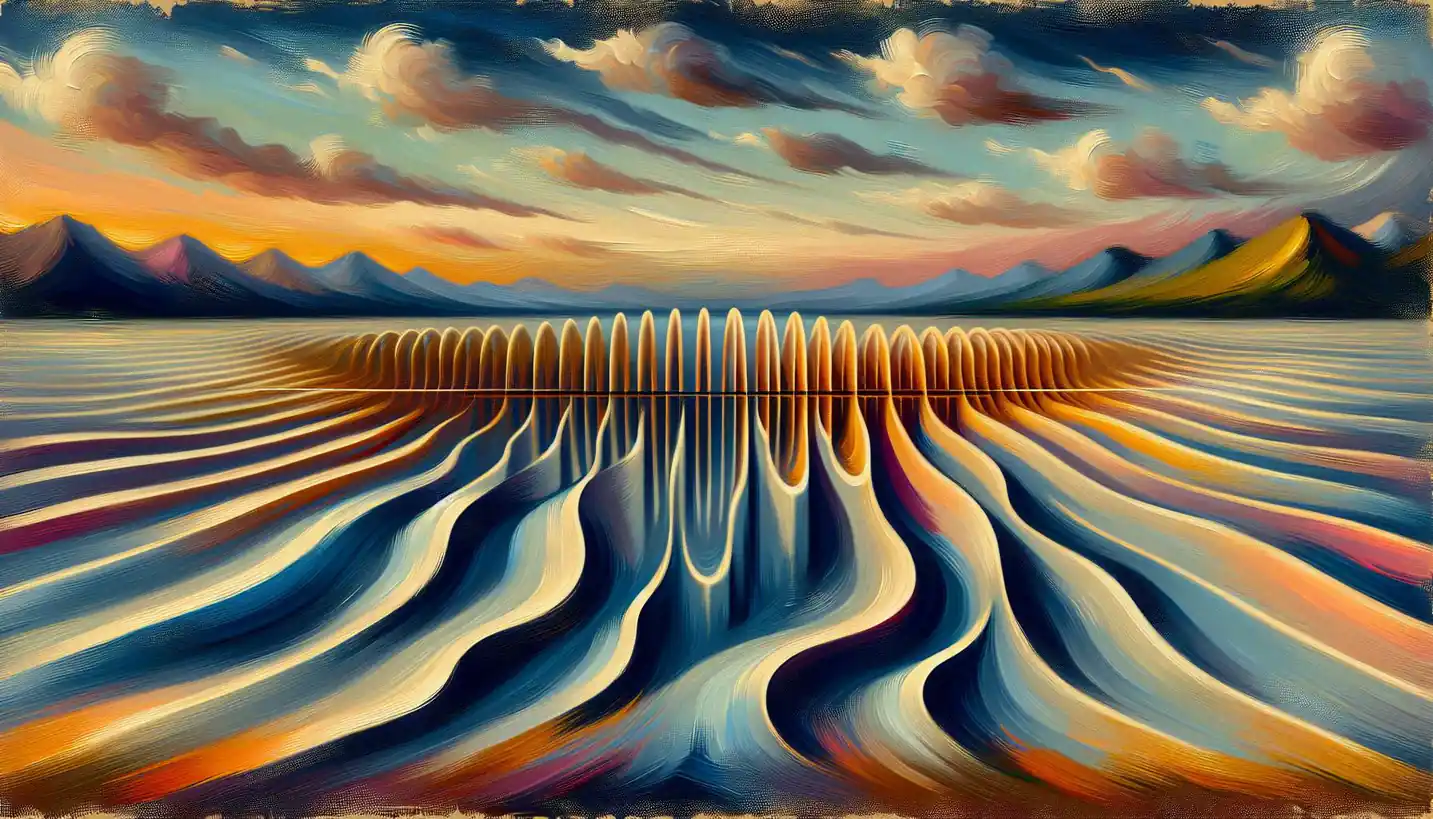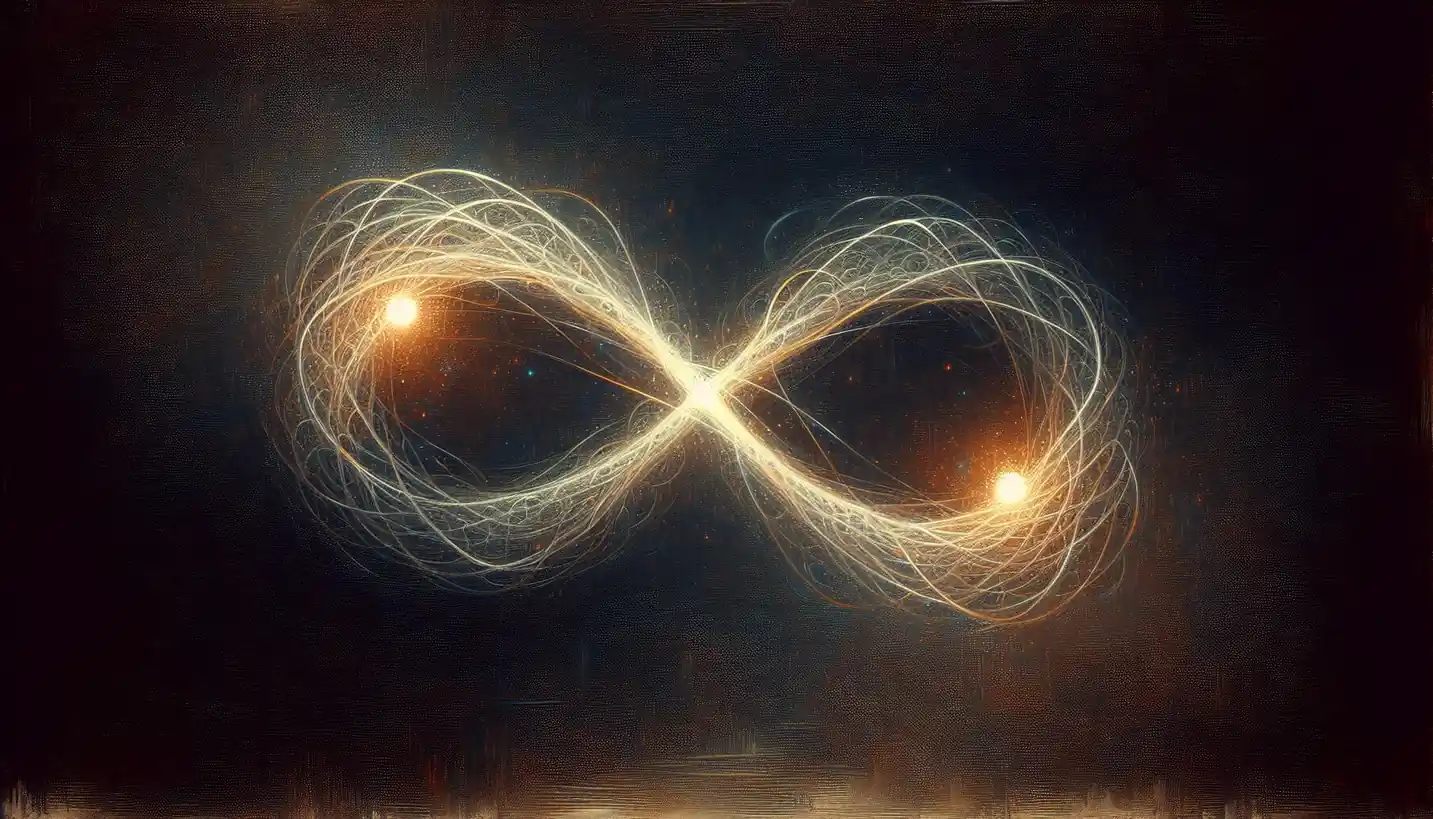· Physics · 5 min read
Spectral Lines: Unveiling the Hidden Signatures of Atoms
Spectral lines reveal the hidden signatures of atoms, providing clues about their composition and interactions. Discover how these lines unlock secrets of the atomic universe.

Alright, let’s dive into the colorful and fascinating world of spectral lines, a topic that might sound like something out of a sci-fi movie but is actually about how atoms interact with light. So, what are these spectral lines, and why are they so important in physics?
What Are Spectral Lines?
Imagine you have a prism and a beam of white light. When the light passes through the prism, it splits into all the colors of the rainbow. This is a spectrum. Now, if you were to shine a light through a gas-like hydrogen, some colors would be missing when you look at the resulting spectrum. These missing colors appear as black lines and are what we call spectral lines.
Spectral lines are like barcodes for atoms. Each element has its unique set of lines. They’re created when electrons, those tiny particles that orbit an atom’s nucleus, jump between energy levels. When electrons absorb energy, they move to a higher level, and when they drop back down, they release energy as light. The specific wavelengths of this light create the spectral lines.
Why Do Spectral Lines Matter?
Spectral lines are pivotal for a lot of reasons. They help us understand atomic structure and energy levels. Scientists can identify the elements present in distant stars and galaxies, giving us clues about the universe’s composition. It’s like a cosmic fingerprinting system.
A Peek into History
The story of spectral lines starts in the early 19th century. Joseph von Fraunhofer discovered hundreds of dark lines, known today as Fraunhofer lines, in the Sun’s spectrum. Later, in the mid-1800s, scientists like Bunsen and Kirchhoff figured out that each chemical element has a specific pattern of spectral lines, almost like a unique musical tune for each atom.
How Do Spectral Lines Work?
Here’s a simple way to think about it. Picture electrons in an atom like floors in a building. You need just the right energy (like a special elevator pass) to move between floors. Each element has a different number of floors and heights between them, so moving from one to another emits or absorbs specific colors of light.
Emission vs. Absorption
There are two main types of spectral lines: emission and absorption. Emission lines occur when electrons release energy and drop to lower energy levels, emitting light in the process. These lines show up as bright colors against a dark background. Absorption lines, on the other hand, happen when electrons absorb energy to jump to higher levels, appearing as dark lines on a rainbow spectrum.
Spectroscopy: The Key to Unlocking Spectral Lines
Spectroscopy is the technique used to study these lines. It’s like using a magnifying glass on light to see its colors more clearly. By examining the light from stars or other celestial objects, scientists can determine their chemical makeup, temperature, density, and even their speed and direction of movement.
Real-World Applications
Beyond astronomy, spectral lines have practical applications here on Earth. In forensic science, spectroscopy can be used to identify substances in a crime scene, much like how detectives piece together evidence. In environmental science, it’s used to determine pollutant levels. Medical diagnostics, art restoration, and even food analysis all benefit from this technology.
Spectral Lines and Quantum Mechanics
Spectral lines are also a gateway to understanding quantum mechanics. They provide evidence that energy levels in atoms are quantized, meaning electrons exist only at specific energy levels, not in between. This understanding forms a foundation for how we comprehend the subatomic world.
Bohr’s Model and Beyond
Niels Bohr was one of the key figures who helped explain spectral lines using his model of the hydrogen atom. His idea that electrons travel in orbits and can jump between them by absorbing or emitting specific energies was groundbreaking. However, it’s the quantum mechanical model, which incorporates wave-particle duality and uncertainty principles, that offers a more complete picture.
Exploring the Universe with Spectral Lines
Spectral lines are like letters from the universe. By analyzing them, astronomers can learn about the physical conditions of far-off galaxies and stars. For instance, the discovery of helium on the Sun came from studying its spectral lines long before it was found here on Earth.
Redshift and Blueshift
As we look further out into space, the concept of redshift and blueshift comes into play. When objects in space are moving away from us, their spectral lines shift toward the red end of the spectrum, a phenomenon known as redshift. Conversely, blueshift happens when objects are moving closer. These shifts help us understand the expansion of the universe and the motion of celestial bodies.
The Importance of Spectral Lines
Spectral lines are crucial because they bridge the gap between the microscopic world of atoms and the vast expanse of the universe. They let us peek into atomic structures and explore the cosmos without ever leaving our planet.
Future Directions
With advances in spectroscopy and technology, the study of spectral lines continues to evolve. New methods are emerging to observe fainter and more distant objects in space. As our understanding grows, so does our ability to answer fundamental questions about the universe. What’s out there? How did it all begin?
Wrapping It Up
Spectral lines might seem like mere streaks of color or darkness, but they are key to unlocking countless mysteries. From helping us identify elements in distant stars to advancing quantum physics, their role is as diverse as the cosmos itself.
So next time you see a rainbow or look up at the night sky, remember there’s a whole hidden symphony of colors and lines that reveal the secrets of atoms and galaxies alike.



